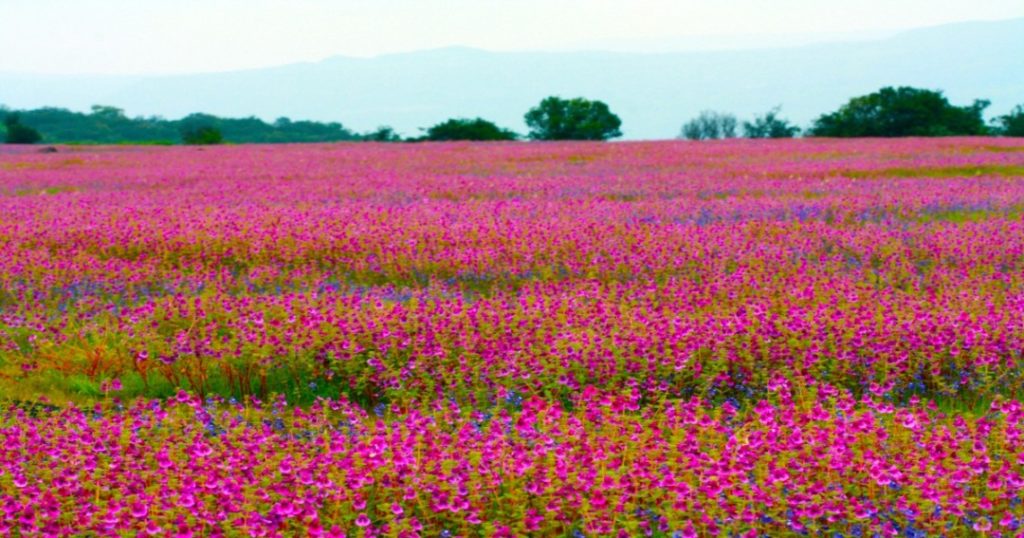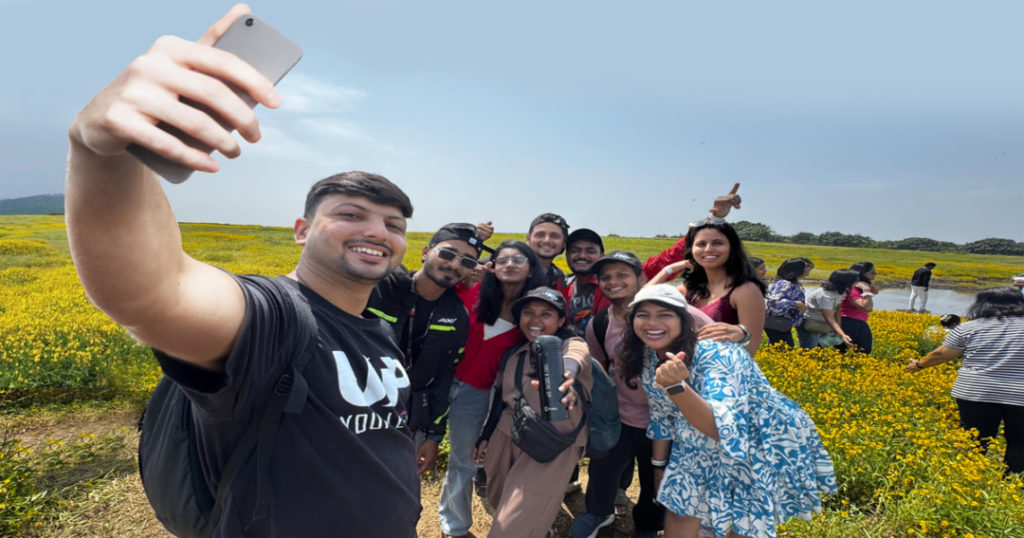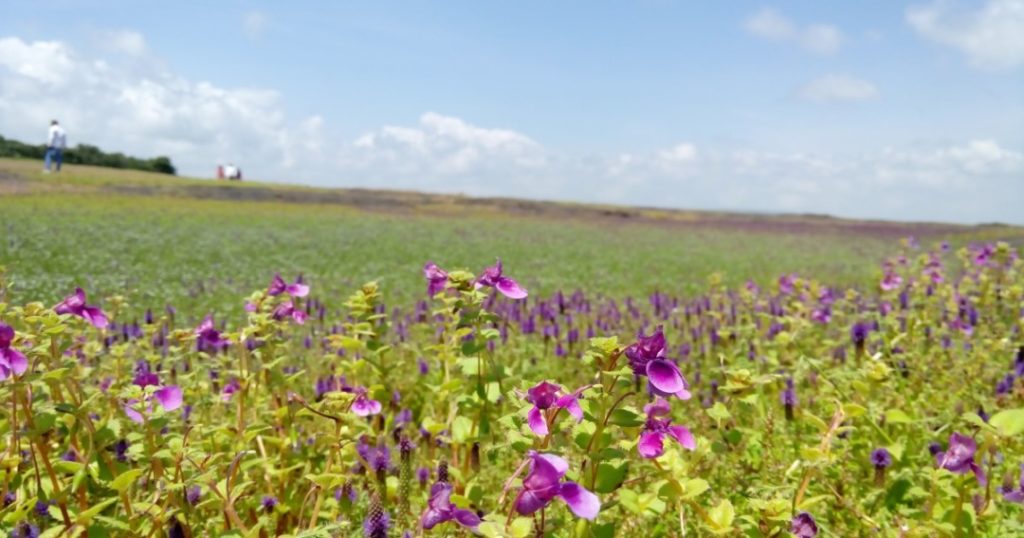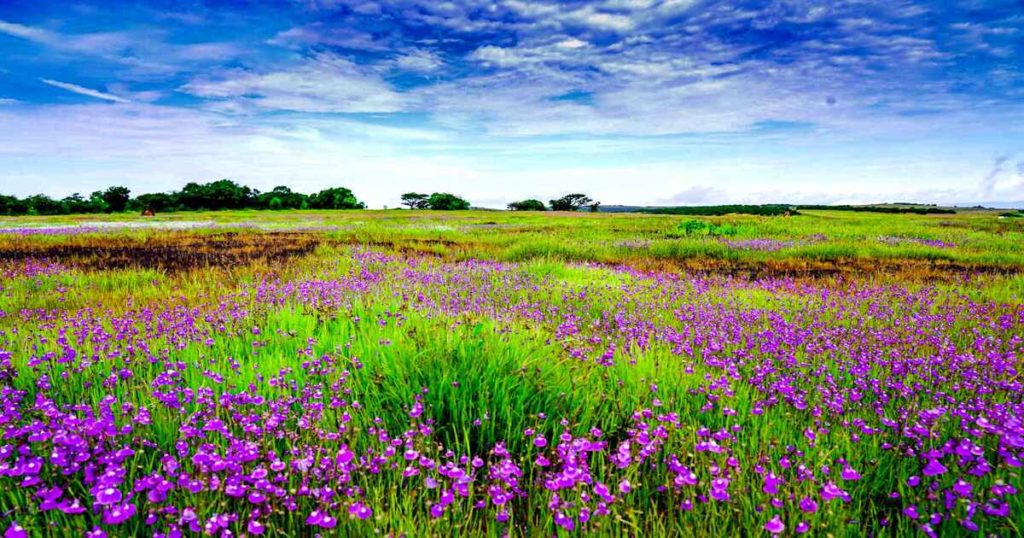
Kaas Pathar, also known as Kaas Plateau, also known as the Valley of Flowers of Maharashtra, is one of India’s most fascinating ecological wonders. Situated in the Satara district, this plateau turns into a natural floral carpet during the monsoon, attracting travelers, nature enthusiasts, and researchers from across the country. Recognized as a UNESCO World Natural Heritage Site (not separately, but under the Western Ghats cluster), Kaas Pathar is not just beautiful but also an important biodiversity hotspot that offers insight into the unique ecosystem of the Western Ghats.
If you’re planning to visit Kaas Pathar, here’s everything you need to know — from geography and biodiversity to how to reach, the best time to visit, and essential travel tips.
Best Time to Visit Kaas Pathar

Think about it, you wanna see flowers and greenery- what better time to visit than the Monsoons? However, the exact timing can vary slightly each year depending on rainfall. If you visit too early (in July), the flowers might not have bloomed yet. By late October, most blooms fade, and the plateau begins to dry up.
So, just as an approximation, the best time to visit Kaas Pathar is between mid-August and early October, right after the monsoon rain begins to slow down. This is when the wildflowers are in full bloom, and the plateau showcases its most vibrant colors.
Timing your visit:
- Early bloom (August): Mostly yellow species and ground-hugging plants.
- Peak bloom (September): A mix of purples, pinks, and whites dominate.
- Late bloom (October): Carnivorous plants and grassland species remain visible.
It’s best to check local updates from the Satara Forest Department or eco-tourism website before planning your trip to Kaas Pathar.
How to Reach Kaas Pathar
Kaas Pathar is easily accessible from Pune, Mumbai, and Kolhapur, making it ideal for a weekend trip.
- By Train: The nearest railway station is Satara Railway Station, connected to Pune, Mumbai, and Kolhapur by regular trains.
- By Air: The closest airport is Pune International Airport, approximately 3 hours away by road.
- Local Commute: Auto rickshaws and local taxis are available from Satara city to Kaas Pathar. It’s best to hire a cab for a round trip, as return transport can be limited. If you plan to visit nearby attractions, hiring a vehicle for the full day is recommended.
Background on Kaas Pathar
Kaas Pathar is a high-altitude plateau located about 25 kilometers from Satara city in Maharashtra. The name ‘Kaas’ comes from the local Kaas tree (Elaeocarpus glandulosus), while ‘Pathar’ means plateau in Marathi. Spread across nearly 1,000 hectares, Kaas Pathar sits at an elevation of around 1,200 meters (3,900 feet) above sea level and forms part of the Western Ghats mountain range.
The unique combination of basalt rock, thin soil cover, and high rainfall creates a specific microclimate that allows a rich diversity of seasonal wildflowers to bloom between August and October every year. Kaas Pathar’s geography is unlike any other in Maharashtra. The plateau’s surface is made of volcanic basalt rock covered with a very thin layer of soil. Because of this, the plant life here is highly specialized — only certain species adapted to poor soil and heavy rain can thrive. The result is an ecosystem where flowers appear in mass bloom for a few weeks each year before disappearing until the next monsoon and it gets so beautiful that it becomes one of the most famous attractions for photographers.
Due to its fragile ecosystem, Kaas Pathar has been declared a Biodiversity Reserve and is protected under the Maharashtra Forest Department. Visitors are now allowed only through pre-booked permits to ensure the conservation of this delicate environment.
Explurger Creator Connect -Day Out @ Kaas Pathar

In October 2025, Kaas Pathar became the backdrop for Explurger Creator Connect, a one-day expedition bringing together over 20 selected creators and travel enthusiasts from across Maharashtra. The event took place on Saturday, 11th October, running from 5 AM to 9 PM.
The route for the day covered Pune → Kaas Pathar → Petla Bhakri breakfast stop → Kaas Lake → Kaas–Mahabaleshwar scenic route with a hidden viewpoint → Lunch at Mapro Garden → return to Pune.
(You can also use the above as Kaas Pathar Itinerary for yourself)
All participants received complimentary entry passes, breakfast, lunch, and Explurger goodies, ensuring a smooth and memorable day of exploration and community bonding.
The Creator Connect at Kaas Pathar wasn’t just a scenic getaway — it was an opportunity for digital creators to experience the beauty of the plateau firsthand, document the seasonal bloom, and inspire responsible travel through their stories. It reflected Explurger’s mission to connect people through real-world adventures while promoting mindful exploration.
Entry and Permit System
To protect the fragile ecosystem of Kaas Pathar, the Maharashtra Forest Department allows only a limited number of visitors per day. You must book your entry pass online through this portal.
Entry fee: Around ₹150 per person (subject to change).
Time slots: 7 AM – 6PM.
Nearby Attractions
If you’re visiting Kaas Pathar, you can easily explore a few more scenic spots nearby:
- Kaas Lake: Just 2 km from the plateau, ideal for short walks and birdwatching.
- Thoseghar Waterfall: A 30-minute drive away, known for its tall cascades during monsoon.
- Sajjangad Fort: A significant historical and religious site near Satara.
- Chalkewadi Windmill Farm: Offers panoramic views of windmills across the hills.
Combining these destinations with your Kaas Pathar trip makes for a full-day nature experience.
Responsible Travel Tips

Kaas Pathar’s natural balance is extremely delicate. To ensure its preservation for future generations, visitors are requested to follow these simple rules:
- Do not step off the marked paths or trample flowers.
- Kaas plateau flowers are very fragile and rare, so do not pluck them.
- Carry reusable bottles; avoid single-use plastics.
- Keep noise levels low to not disturb wildlife.
- Follow the directions of forest guards and eco-guides.
- Photography is allowed, but drones are restricted unless permitted by the forest department. If you’re using macro lenses, do so carefully without touching the plants.
Accommodation and Food
There are no hotels or restaurants inside Kaas Pathar. Accommodation options are available in Satara city, ranging from budget lodges to mid-range hotels. Some eco-stays and homestays near Kaas also operate during the flowering season.
You can carry light snacks and water, but it’s best to avoid picnicking within the plateau area. Small stalls near the entrance offer tea, corn, and local refreshments.
Kaas Plateau, Maharashtra – A UNESCO Heritage Gem
Kaas Plateau Maharashtra, stands as a reminder of how valuable natural ecosystems can be when preserved. Its classification as a UNESCO site was based on its exceptional biodiversity and the presence of many rare, endemic species found only in the Western Ghats.
Over the past decade, Kaas Pathar has become an educational hub for eco-tourism. Students, researchers, and photographers from across India visit every year to study its unique ecosystem. This blend of science, tourism, and local livelihood makes Kaas Plateau an important model for sustainable travel.
So, the next time you plan a monsoon getaway, skip the crowded hill stations and head to Kaas Satara — Maharashtra’s very own living carpet of wildflowers.
FAQs About Kaas Pathar
2. What is the entry fee for Kas Pathar?
Entry fee: Around ₹150 per person (subject to change).
Time slots: 7 AM - 6PM.
3. Where is Kaas Pathar located?
Kaas Pathar is located around 25 km from Satara city in Maharashtra, near the Sahyadri range of the Western Ghats. It’s a part of the Kaas Plateau Maharashtra, recognized as a UNESCO World Natural Heritage Site.
4. Do I need to book tickets in advance?
Yes. Entry is limited to preserve the ecosystem. You must book your Kaas Pathar entry passes online through the official government portal.

